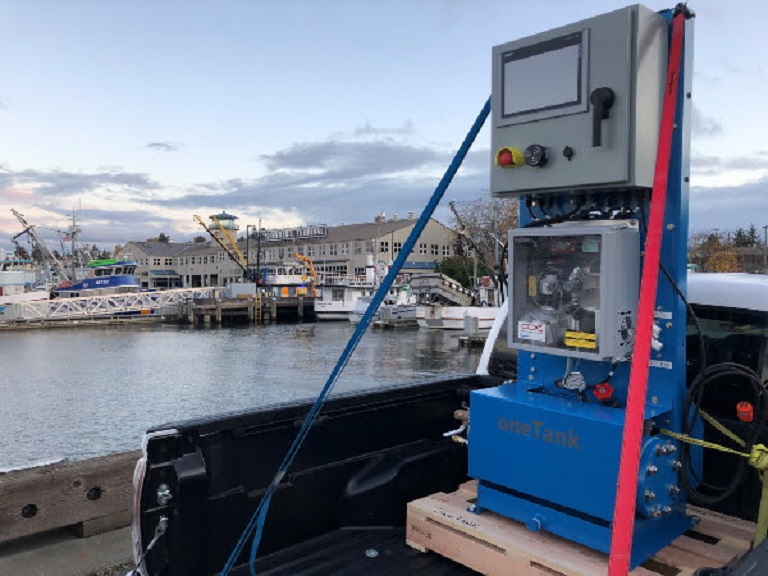Global ballast water equipment manufacturer ERMA FIRST is bringing the world’s smallest and easiest to install ballast water treatment system to the international market through its acquisition of US firm oneTANK LLC.

oneTANK, a subsidiary of naval architecture and marine engineering firm Glosten, has developed a small scale innovative, low-cost, IMO Revised G8 Code and United States Coast Guard compliant system.
Based on a patented mixing technology developed by the U.S. Geological Survey, the system can be installed in larger vessels’ aftpeak tanks. It is also suitable for use aboard workboats, tugboats, semi-submersibles, fishing vessels and superyachts. The technology is already being adopted on ships in aftpeak tanks within Overseas Shipholding Group’s tanker fleet and on the dredger MV Charlock in the Netherlands.
ERMA FIRST has seen significant success with its electro-chlorination systems for larger vessels and is now expanding its portfolio to provide a wider variety of onboard solutions to a larger market than ever before. The move follows its recent acquisition of German water treatment specialist RWO GmbH in May 2021, METIS Cyberspace Technology in 2019 and positions ERMA FIRST as a top tier, global provider of environmental protection systems.
ERMA FIRST Managing Director Konstantinos Stampedakis said:
“This is a game-changing ballast water treatment technology. It is compact, simple-to-use, and fully automated. It delivers a quick to install additional solution for small ballast tanks on big ships as well as a stand-alone solution for small vessels such as yachts, tugs and offshore support vessels. To win the battle against invasive marine species and effectively protect our vulnerable marine eco-systems, ballast water from internationally trading smaller vessels also needs treating in a way which is practical and economically viable. We believe that we have this solution in the form of oneTANK, a product which keeps it simple.”
oneTANK Managing Director Kevin Reynolds said:
“In ERMA FIRST we’ve found the perfect partner to take our innovation to the next level. Over the past 10 years they have been hugely successful in introducing their own large electro-chlorination system to the global merchant fleet; they have a commitment to research & development and crucially they have the financial resources required to market this product internationally. We are excited to see our product go global.”
oneTANK treats ballast water within the vessel’s ballast tank and has no filters, ultra-violet lamps or electrolytic chlorine generators. Its footprint is only 600mm x 600mm, half the size of its nearest competitor. Its power consumption is similar to that of a household washing machine. With low-running costs and fully regulatory compliance, oneTANK provides a ballast water management solution which works in all water qualities and salinities.
The system uses an 8.25% or 12.5% sodium hypochlorite (bleach) and 30% sodium thiosulfate solution – readily available chemicals that can be purchased from suppliers worldwide. Application is practical for smaller vessels as a 20-litre container of 12.5% bleach will treat approximately 288 cubic meters of ballast water. For larger vessels, oneTANK can treat tanks as large as 4,000 cubic meters.
Seawater is automatically treated by applying and mixing the bulk chemicals in-tank, allowing users to treat on their own schedules, avoiding busy in-port times.
U.S. Geological Survey (USGS) Technology Transfer Program, Patent and Licensing Manager James Mitchell said:
“Federal laboratories such as USGS are encouraged to make their inventions available to private industry in order to benefit the nation’s economy and to have the technology products available on world markets. The technology transfer program at the USGS is designed to leverage the research capabilities of USGS scientists with the commercial development potential of the private sector. USGS is proud to be doing our part to help stop the spread of aquatic invasive species by the commercialization of its patented technologies.”
Source: ERMA FIRST